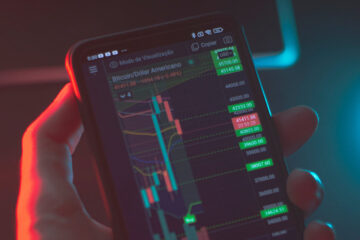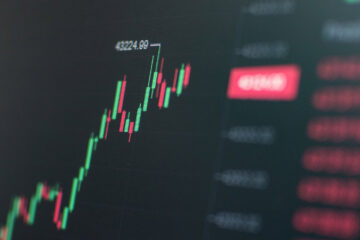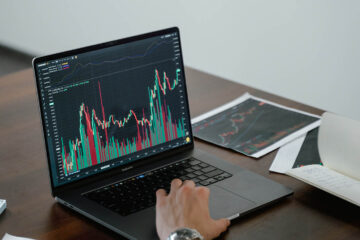Forex trading has evolved significantly over the years, with new technologies and innovations changing the landscape of the industry. As we look to the future, traders need to stay up-to-date on the latest trends and developments in forex trading to ensure continued success.
In this article, we’ll explore some of the key trends and innovations in the industry, including the rise of machine learning and artificial intelligence, the growth of mobile trading, and the increasing use of social media in forex trading.
Rise of Machine Learning and Artificial Intelligence
Machine learning and artificial intelligence (AI) are revolutionizing the way traders approach forex trading. These technologies allow traders to analyze vast amounts of data quickly and make more informed decisions based on that data.
One example of how machine learning is being used in forex trading is through the development of automated trading systems. These systems use algorithms to analyze market trends and make trades based on pre-set criteria, without the need for human intervention. This can lead to quicker decision-making and potentially higher profitability.
However, there are potential risks associated with the use of machine learning and AI in forex trading. For example, if the algorithm is not properly designed or maintained, it could lead to inaccurate predictions or even losses. Traders need to understand the limitations of these technologies and use them in conjunction with human expertise.
Looking to the future, there are exciting developments in machine learning and AI for forex trading. For example, natural language processing (NLP) technology can help traders analyze and interpret news articles and social media posts to gain insight into market sentiment. Additionally, advanced machine learning algorithms can help traders identify patterns in market data that might not be immediately apparent to the human eye.
Overall, the rise of machine learning and AI in forex trading offers significant potential benefits, but traders need to approach these tools with caution and use them in tandem with their expertise and analysis.
Growth of Mobile Trading
The mobile trading has been a game-changer for forex traders, providing more flexibility and accessibility than ever before. With the rise of smartphones and tablets, traders can now access trading platforms from virtually anywhere, allowing them to react quickly to market conditions and take advantage of opportunities in real-time.
Mobile trading platforms typically offer many of the same features as desktop versions, including charting tools, news feeds, and the ability to place trades. Some platforms also allow traders to set custom alerts for certain price levels or market events to help them stay informed even when they’re not actively monitoring the markets.
One of the biggest benefits of mobile trading is the ability to trade on the go. Traders can monitor markets and make trades from their mobile devices without being tied to a desktop computer. This can be particularly beneficial for those who have busy schedules or travel frequently.
Looking ahead, the future of mobile trading looks promising. With the development of 5G technology, trading platforms may become faster and more reliable than ever before. Additionally, advances in artificial intelligence and machine learning may allow for more advanced mobile trading features, such as automated trading algorithms that can be accessed from a mobile device.
Overall, the growth of mobile trading has opened up new opportunities for forex traders, making it easier than ever to stay connected and stay ahead of the markets.
Increasing Use of Social Media in Forex Trading
Social has become an increasingly important tool for forex traders, providing a wealth of information and insights into market sentiment. Traders can use social media platforms such as Twitter, Facebook, and LinkedIn to track news and opinions from experts in the industry, as well as to gauge public sentiment about particular currencies or markets.
One of the most popular ways that traders use social media is by following influential figures in the industry. These could be well-known economists, traders, or market analysts who regularly share their thoughts and insights on social media. By following these individuals, traders can stay up-to-date on the latest market trends and potentially gain valuable insights into future price movements.
Social media can also be used to monitor market sentiment. By tracking the volume and tone of social media posts related to a particular currency or market, traders can get a sense of how others feel about that market. This information can help make trading decisions, particularly in volatile or uncertain markets.
However, there are potential risks associated with using social media for forex trading. Social media can be a source of misinformation or rumors that may not be accurate. Additionally, it’s important to remember that social media is a public forum, and traders should be cautious about sharing sensitive information or making trades based solely on social media posts.
Looking ahead, the use of social media in forex trading is likely to continue to grow. As more traders turn to social media for insights and information, it’s important to approach this tool with caution and use it in conjunction with other sources of data and analysis.
Conclusion
The future of forex trading is shaped by a number of exciting trends and innovations, including the rise of machine learning and artificial intelligence, the growth of mobile trading, and the increasing use of social media. These developments are transforming the way traders approach forex trading, providing new tools and resources to help them make more informed decisions.
While these trends offer significant potential benefits, traders need to approach them with caution and use them in conjunction with their expertise and analysis. Traders who stay up-to-date on the latest developments in the industry and adapt to new technologies are likely to be the most successful in the years to come.
In conclusion, the world of forex trading is changing rapidly, and traders who embrace these changes and stay informed about the latest trends and innovations will be well-positioned for success in the future.



0 Comments